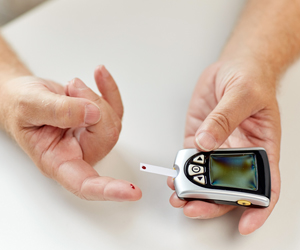Diabetes-related amputations are on the rise in the UK. There was a huge 43 per cent rise in major amputations between 1996 to 2005, a study shows. Importantly the amputations were all associated with type 2 diabetes only.
Researchers from Imperial College London found the number of amputations in people with type-one diabetes had declined.There are 2.35-million people in UK with type-two diabetes. Apart from complications like heart attacks and strokes, diabetics are also at high risk of developing foot problems like ulcers which, if infected, can lead to gangrene.
The researchers publishing their study in the journal Diabetes Research and Clinical Practice said, most major amputations i. e. above the ankle joint have risen by 43%, while the average age of those undergoing these amputations has fallen from 71 to 69-years of age.
More men then women underwent amputations, in a gap that has widened during the decade.
However, doctors believe better care can help avoid up to 80% of amputations, with better checks by doctors and symptom awareness amongst patients reducing the need for amputation.
These findings highlight the importance of frequent foot checks, including controlling blood sugar, blood pressure and cholesterol levels.
Advertisement
"The findings of this study are especially interesting because they indicate a particular rise in the number of type-two diabetes related amputations," she said.
Advertisement
She added more early diagnosis was needed, as the condition could go undetected for more than 10 years and most people already had complications when they were diagnosed.
Source-Medindia
GPL










